The entire AMD EPYC 3000 lineup is fascinating. With four single-die SKUs, AMD offers different looks at the lower-power options in terms of cores and features. Onboard the Supermicro M11SDV-4C-LN4F is an AMD EPYC 3151 SoC. Sporting 4 cores and eight threads, the EPYC 3151 provides a lot of value on this sub $500 street price platform.
We have done a lot of work with the Supermicro M11SDV platform, and therefore have some great perspective on it. With security vulnerabilities like Foreshadow that only impacted Intel CPUs, having a second option qualified can help mitigate future vulnerabilities. It also can help to keep pricing competitive. In the embedded space where this platform is targeted, that is a big deal.
Test Configuration
Here is our basic configuration for this class of CPU:
- Motherboard: Supermicro M11SDV-4C-LN4F
- CPU: AMD EPYC 3151
- RAM: 4x 16GB DDR4-2666 ECC RDIMMs
- SSD: Intel DC S3710 400GB
- SATADOM: Supermicro 32GB SATADOM
The CPU itself supports up to 512GB of RAM, in a 4x 128GB configuration. That is as much as the Intel Xeon D-2100 series platforms and more than both the Intel Xeon D-1500 and Intel Atom C3000 series embedded platforms.
We have already reviewed the other M11SDV platforms. These include the Supermicro M11SDV-8C-LN4F (its active cooler variant is the M11SDV-8C+-LN4F), M11SDV-8CT-LN4F, and M11SDV-4CT-LN4F that are all very similar. We have a short video overview of the family.
You will see this test setup more in the future and it is similar to our Intel Xeon D review platform. We also spent time plugging in devices to ensure the NVMe and PCIe lanes worked as advertised. We also tried up to 128GB of RAM in 4x 32GB configurations in our testing.
Supermicro M11SDV-4C-LN4F Overview
Measuring 6.7″ x 6.7″ the Supermicro M11SDV-4C-LN4F is a compact mITX motherboard like the other M11SDV platforms.
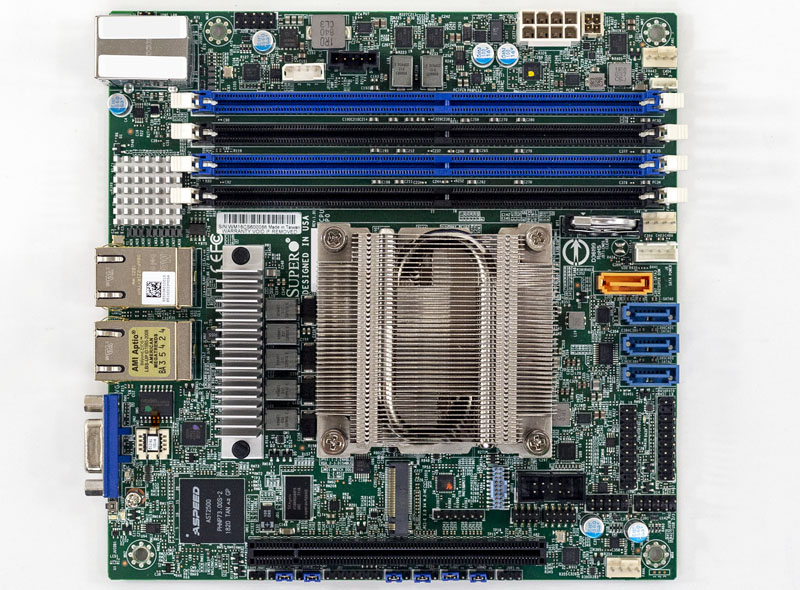
At the heart of the M11SDV-4C-LN4F is the AMD EPYC 3151 CPU. As a quad-core SoC this part adds eight threads to the AMD EPYC 3101’s four threads as found on the M11SDV-4CT-LN4F. The CPU itself if cooled via passive airflow from front to rear. The passive heatsink requires cooling from fans via the chassis.
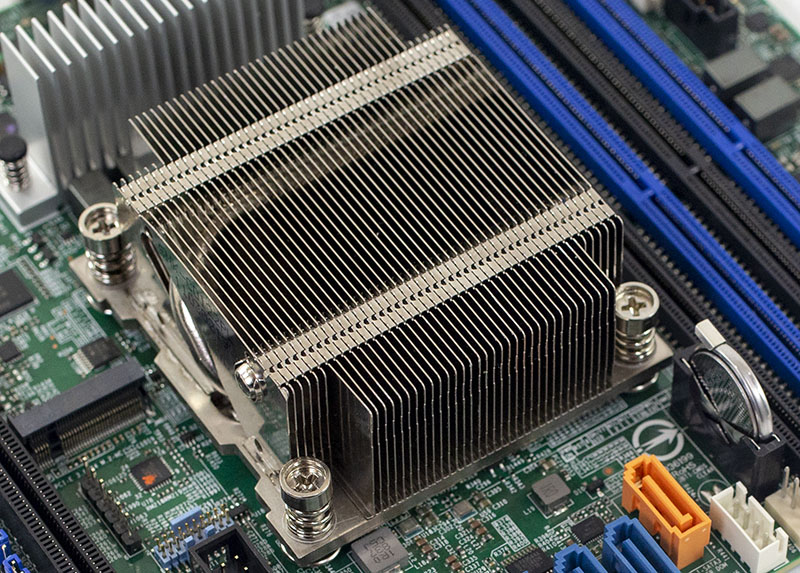
Here is a lscpu output for the EPYC 3151:
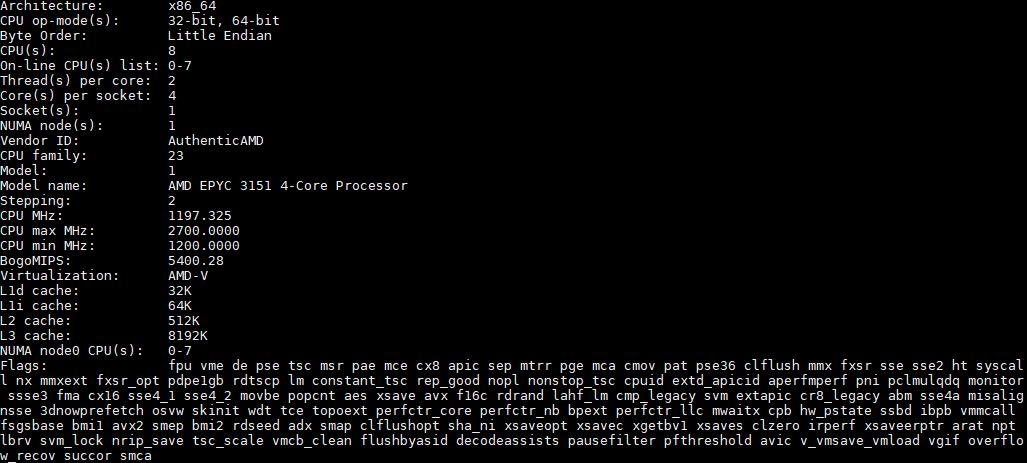
Like the other models, this board can still handle four 128GB DDR4 DIMMs for a total of 512GB. That is more than the Intel Xeon D-1500 and newly announced Intel Xeon D-1600 series, and the same as the Xeon D-2100 series. The maximum rated memory speed is 2666MHz, which is above the rated 2133MHz speed for the eight-core AMD EPYC 3201.
For M.2 connectivity there is a PCIe 3.0 x4 M.2 2280 (80mm) slot for SSDs. Many SSDs with power loss protection are 110mm. We see this M.2 slot used mostly for a read cache or boot device in systems.
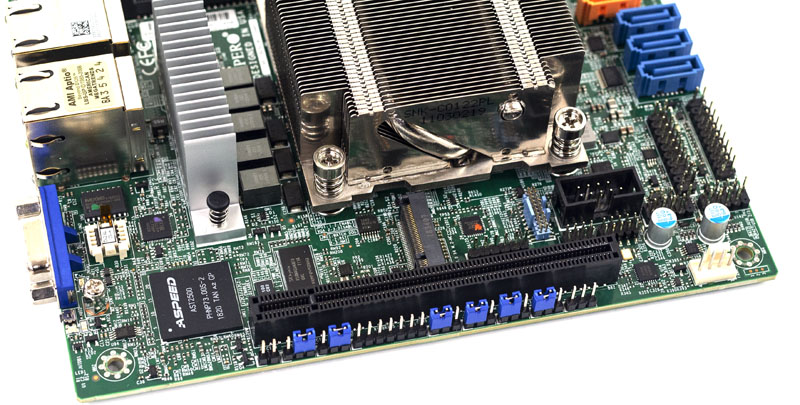
As with the other platforms, there is SR-IOV and IOMMU support on the platform. We also wanted to note for our readers that the PCIe x16 slot is capable of running in x16, x8x8, or x4x4x4x4 mode. The 4×4 mode is useful if one, for example, wanted to use four PCIe NVMe SSDs:
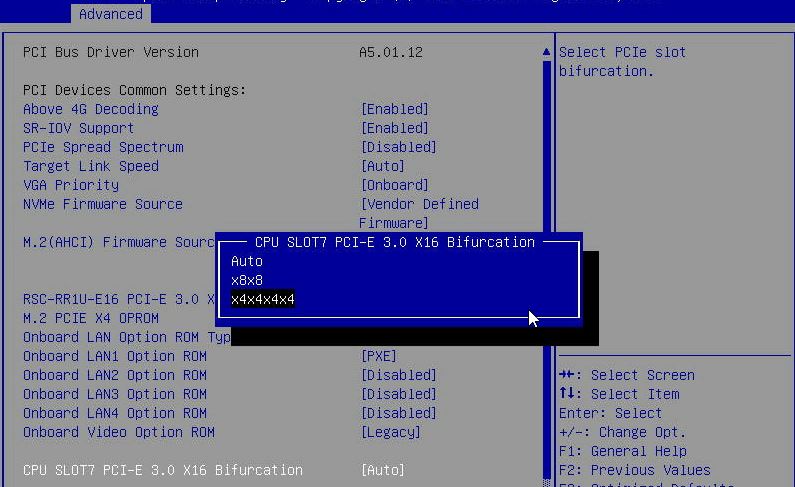
The Supermicro M11DV-4C-LN4F has a standard front panel header, COM port, and USB 2.0 headers. You will not find a Type-A USB internal header nor a USB 3.0 front panel header. From the look of the motherboard, there does not seem to be room for those features.
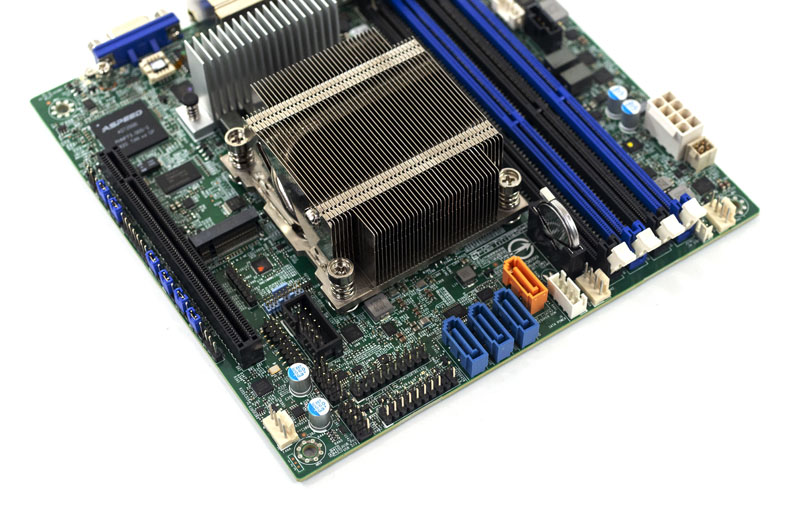
We also see four 7-pin SATA ports. One is an orange/ gold port for SATADOMs. In that port, a SATADOM does not need an additional power cable to operate which is handy in embedded applications. That white header between the SATADOM port and the battery is a power connector. When on DC power, Supermicro makes cables for that header that can power four hard drives/ SSDs.
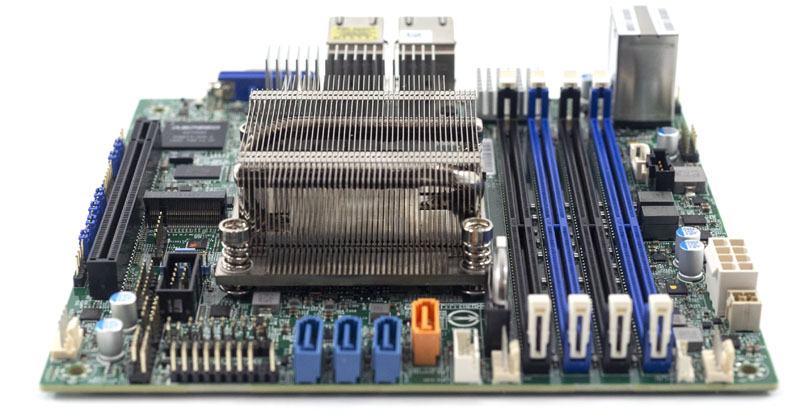
The motherboard itself has three 4-pin PWM headers. That allows for a redundant SoC cooling path as well as a peripheral fan. You will also notice a single 8-pin power header. Like the other initial members of the M11SDV family, Supermicro sacrificed the traditional ATX 24-pin connector to save space. The company already did this on some of their Intel embedded motherboards.
The rear I/O is comprised of a legacy VGA port on the right side and two USB 3.0 ports plus a management port on the left. Overall I/O pinout is compatible with a wide range of Supermicro embedded products so those that have systems based on Intel embedded products can likely use the same I/O shields and chassis with the Supermicro M11SDV-4C-LN4F and other M11SDV motherboards. That gives four AMD-based CPU levels in a similar appliance.

Networking is provided by an Intel i350 quad port NIC. This is a 1GbE NIC that supports higher-end features like SR-IOV. At the same time, Supermicro is not leveraging the AMD EPYC 3151’s quad 10GbE NIC.
While we wanted to see a 10GBE solution, and our readers have responded accordingly in our previous reviews, we understand the conservative design decision for a first-generation embedded product. The Intel i350 is well supported by every major OS vendor and there are many firewalls and embedded appliances that do not need 10GbE. We still have not found a current-generation OS that did not work with the platform out-of-the-box.
Next, were are going to look at the Supermicro M11SDV-4C-LN4F management and system topology. We will then show performance figures along with power consumption and our final thoughts.

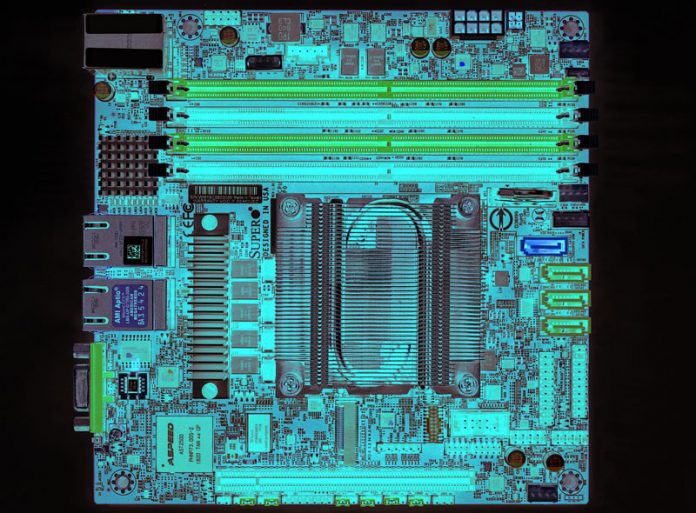



From what I’ve seen, these 3000 series embedded chips from AMD offer 32 PCIe lanes, so I’m somewhat surprised they are keeping these on tiny platforms for the initial launch. I’d think that increased storage flexibility would be a big selling point of a SKU like this, so having additional PCIe slots and/or M.2 would be really nice.
@Andrew: Agree entirely. This article doesn’t plot it directly, but AFAIK Intel still wins performance/watt. AMD’s big advantage is lots more I/O — which such small boards cannot accommodate.
Ya’ll are joking. Right Frank? They’ve even given the data for direct comparison https://www.servethehome.com/supermicro-x11sdv-4c-tln2f-review-with-intel-xeon-d-2123it/3/
Look at the 4c/8t Intel Xeon D-2123IT power consumption compared to the EPYC 3151 here. They’re both using SM boards and the power isn’t close while performance is. That Xeon D-2123IT has 2x the memory bandwidth so that’s fair, but it’s using a lot more power.
I’m hoping maybe the 2nd iteration of Epyc 3xxx boards is a little more ambitious, and takes advantage of 10GbE, more SATA and maybe a FlexATX option with extra PciE slot(s).
what VRMs does this have?
When they add a second pcie slot I will be interested. Then I can add sas control, and 10g or 40g card. One slot is two few. I am enjoying faster networking and want option for 8 platters.
supermicro has a reputation for not supporting standard off the shelf hardware
i’ve seen this board’s compatibility list. its next to impossible to have supermicro green light hardware that’s received thousands of positive reviews just because supermicro isn’t selling it, which makes working with their support team very difficult. i hope that someday soon when you guys write reviews of products, the first consideration is accessibility of support and compatibility
a note on compatibility:
i’d like to build an epyc 3251 server with my own case and power supply
however, supermicro does not include a kit that will allow me to interface their headers to a face plate
supermicro also does not provide adapters to interface standard atx to the power ports and smb headers
so even thought this is a server class board that anyone would like to work with, the review is biased in the sense that we may not use it stand alone. it must come with supermicro enclosures
On the PSU part, they are not using the ATX power so you just need to utilize the CPU power connector on a standard PSU and have a jumper solution (they are around $6 available all over) for the PSU.
On the headers, they are fairly standard pins. It is pretty hard, especially in the server industry, to fault a vendor for not having a pin-compatible solution for every chassis out there. Most server vendors you are lucky to have 1-2 chassis options and many more connectors are customized. We have used these in non-SM chassis without issue though.